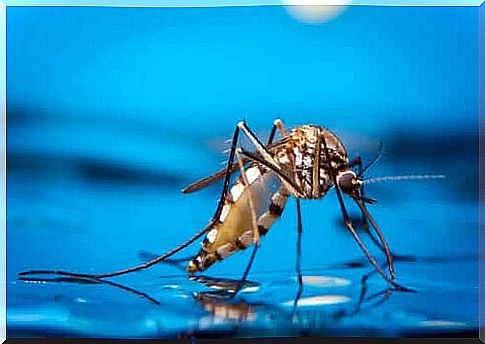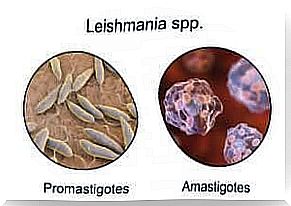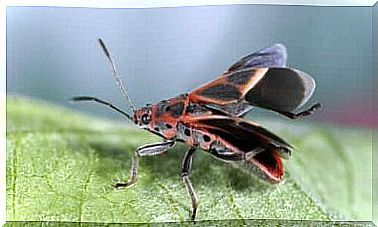Frequently Occurring Insect Bites In Dogs

There are a few different insects that can be harmful to your dog: mosquitoes, fleas, bed bugs, and ticks, as well as bees, wasps, and others. But which insect bites are particularly common in dogs?
When an insect bites your dog, it injects certain components into the saliva that allow it to subsequently ingest food. The saliva contains a cocktail of various substances that have been carefully refined over thousands of years. These include anticoagulants and vasodilators, as well as some anesthetics. Insect bites not only cause allergic reactions, but can also trigger a number of diseases.
Various allergic reactions from insect bites
Some animals are particularly sensitive to certain insect bites, which can lead to allergic reactions. In severe cases, the animal can experience anaphylactic shock. This happens when the immune system reacts extremely strongly to the insect bites.
Although anaphylaxis is rare as a reaction to an insect bite, it is important that you watch out for changes in your dog’s behavior, shortness of breath, or swelling of the skin. If you experience any of these symptoms, you need to see a veterinarian as soon as possible.
Mosquito bites and heartworm disease
Heartworm disease is a serious parasitic disease caused by the nematode Dirofilaria immitis , which lives in the blood vessels and hearts of infected animals. Unfortunately, there are no laboratory tests that can confirm a diagnosis of dirofilariasis.

The disease spreads through mosquito bites. When a mosquito bites an infected animal, the extracted blood contains prelarvae. The parasites continue to develop in the mosquito until they reach the larval stage.
Then when the mosquito bites a second dog, it infects it with the parasite. Once inside the dog, each heartworm can grow up to 30 cm long and damage the lungs, arteries and heart. Although there are treatments for this condition, preventing and controlling mosquitoes is the most effective way to prevent heartworm disease from occurring.
Insect bites: ticks and Lyme disease
If your dog has been bitten by a tick, you can reduce the risk of a tick-borne infection such as Lyme disease by removing it as soon as possible. The disease is transmitted by Borrelia burdogferi bacteria.
Dog owners can prevent Lyme disease by protecting their pets from parasites. In the event of an infestation, it is important to treat the dog as soon as possible. The likelihood of infection increases if the dog is in contact with the tick for more than 48 hours.
Ticks and babesiosis
Babesiosis is another disease caused by protozoal parasites (single-cell parasites). Dogs are usually infected by tick bites.
The disease can also be transmitted to the puppies through blood transfusions from an infected donor or from the mother while still in the womb. The incubation period is about two weeks on average. But the symptoms can be quite mild. In some cases, it can take months or even years before the disease can be diagnosed.

Insect bites – flies and myiasis
Botflies and blowflies, for example, can infect your dog with fly maggot disease (myiasis). The flies lay their eggs in the skin of their victims, usually preferring open wounds. Within a few days, the eggs hatch into larvae that crawl over the surface of the skin or burrow into deeper tissue layers, causing secondary swelling and bacterial infections.
Depending on the area of the body, myiasis is classified as cutaneous, ophthalmic, atrial, or urogenital. In addition , it can affect any vertebrate animal, including humans, and is common around the world. Most often, however, it occurs in the rainy season.
Sand flies and leishmaniasis
This disease is also caused by a protozoal parasite. Dogs and certain rodents in many parts of the world are affected. It is most common in rural areas, particularly South America and the Mediterranean. Usually these parasites spread via sand flies.
People can also get leishmaniasis. However, you should know that you cannot get the disease directly from an infected dog.









